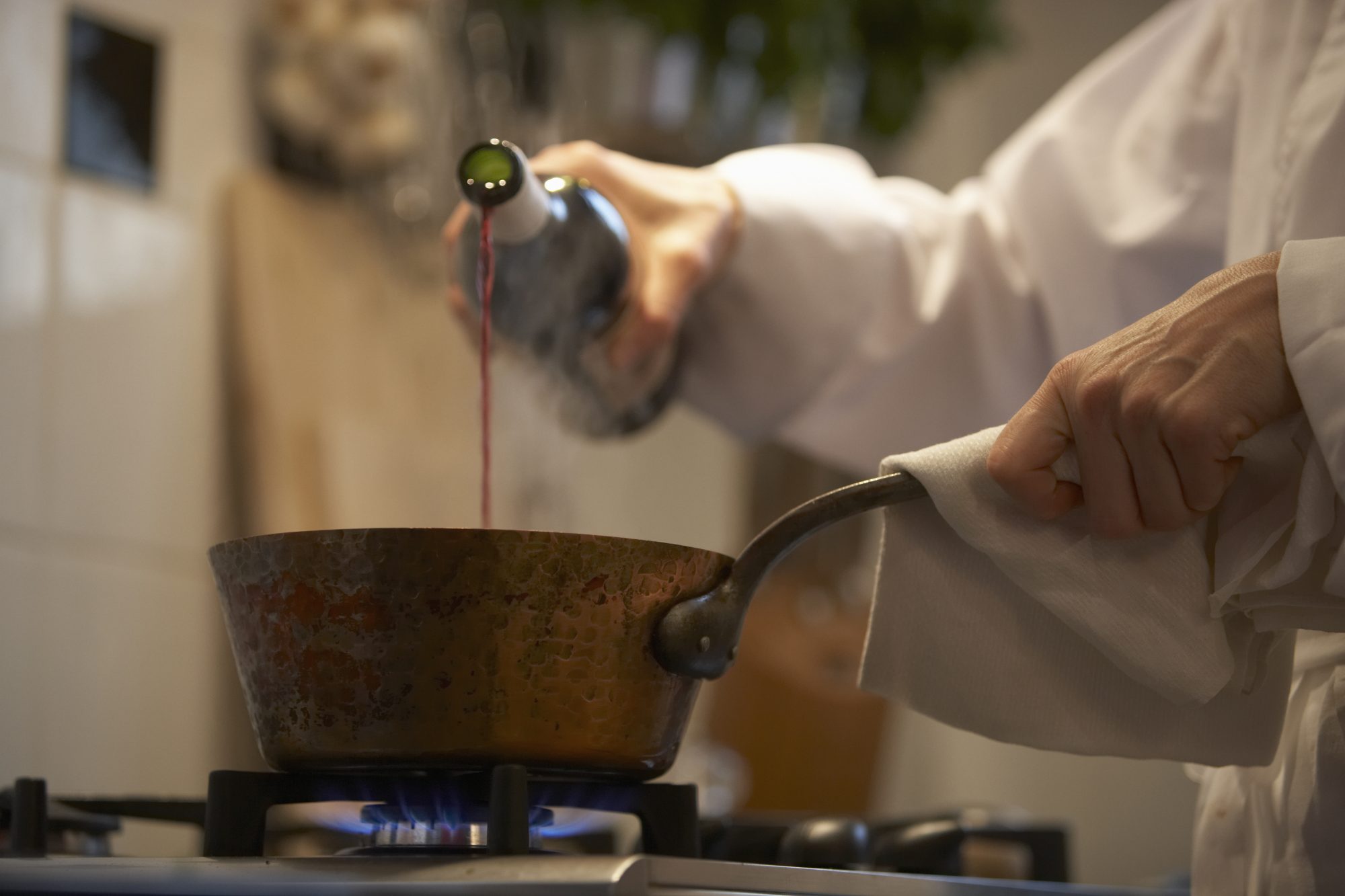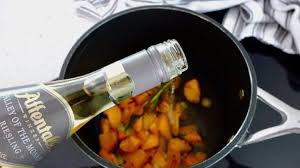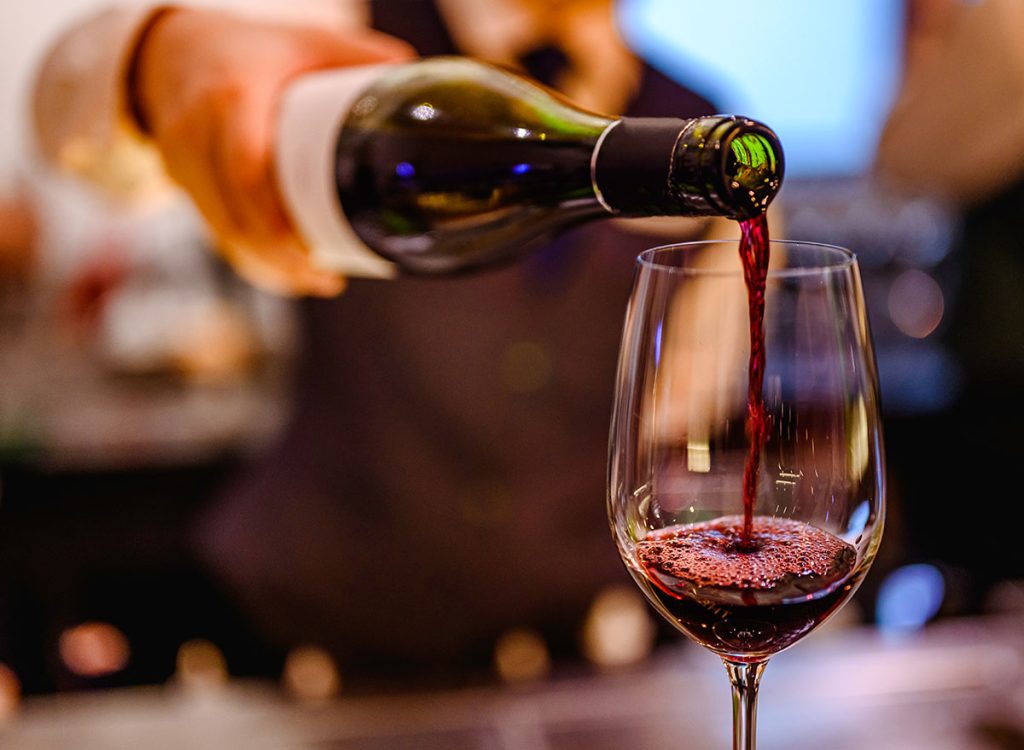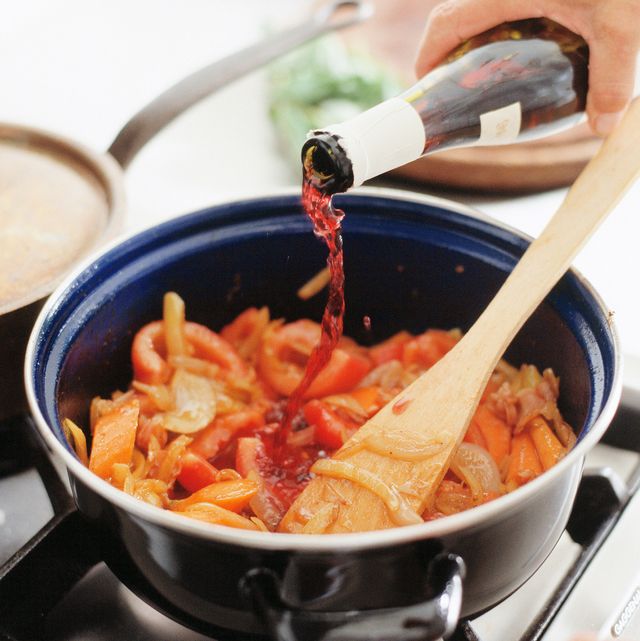Can You Cook with Old Opened Wine?

In our house, my wife and I virtually always have an open bottle of wine. They can go sour if left too long, but I’ve often wondered if you can cook with old opened wine.
It’s OK to cook with open wine as a general rule and Refrigerate for up to 2 months before using. It’s also OK to mix different reds or whites. The longer it stays after opening, though, the closer it gets to vinegar. As a result, adjust the acidity as needed.
However, there is more to know about cooking with old wine and how long wine lasts.
So, in this post, we’ll go into the realm of opened wine, sometimes known as “corked” wine, and whether it’s acceptable to cook with wine that you wouldn’t drink. What’s the difference between cooking with an opened bottle of wine and purchasing “cooking wine”?
We’ll also see if there’s a difference between red wine that’s been opened for a long time and white wine that’s been opened recently.
So let’s get started!

How long can you keep an opened bottle of wine for cooking purposes?
Refrigerate an opened bottle of wine (red or white) for up to 2 months to use in cooking. After that period, it’s better to toss it out. When putting the label in the refrigerator for the first time, it’s also a good idea to write the date on it.
Wine gets suffocated by oxygen. Even with those fancy vacuum-sealing rubber corks, you’ll probably want to drink the wine within a few days after opening it.
The wine will get more acidic after three or more days after being opened. On the tongue, it will have a sharpness or tartness that wasn’t present previously.
However, the length of time wine can be considered decent varies depending on the type of wine.
Of course, I’m referring to classic red and white wines for consumption. Port, Sherry, and Madeira are examples of fortified wines. They contain a substantially higher alcohol percentage and sugar content (why some states require them to be sold in liquor stores).
Sugar and alcohol work together as a natural preservative, allowing those wines to keep considerably longer. Refrigerate them to extend their shelf life even further.
But, when it comes to everyday wines for cooking, how long after they’ve been opened is too long?
I had a wine snob friend who used to remark, “You should never cook with a wine you wouldn’t drink,” and I believe that is true to some extent.
But I don’t think we’re going to spend $20 on a bottle of wine merely to cook with every time we make dinner in the real world.
I spoke with a few experts on the subject, including Bon Appétit, and they all agreed that you CAN use old opened wine for cooking if you meet the following criteria:
- It should be kept in the refrigerator.
- It can be used for up to 2 months after it has been opened.
- In your cooking wine bottles, it’s OK to mix different brands/bottles of the same type (red/white).
Do you enjoy making risotto but are out of wine or concerned that your opened bottle has gone wrong?
It’s no problem! I showed you how to prepare risotto without wine while still getting fantastic results in a recent blog I wrote! I was very impressed that adding just one item can give you that wine flavor without any alcohol!

How long can red or white wine be stored for cooking?
When used for cooking, neither red nor white wine should be kept for more than two months. White wine, on the other hand, tends to last longer than red wine.
When I open a bottle of red wine, I notice that it “turns” faster than white wine.
Red wines, in my opinion, require to “breathe” for a minute after being opened before being consumed, but white wines do not.
But I’m not a wine specialist; I’m simply a man who has bought and drunk a lot of wine over the years and has not only cooked with it a lot but has also been around a lot of wine experts throughout my two decades at Whole Foods.
Wine is manufactured by fermenting several grape varieties. Despite popular belief, red and white wines sometimes employ the same grape varieties, but grape skins distinguish red wine in the batch.
The shelf life of wine is determined by a variety of factors, including:
- What was grape(s) utilized in which vintage?
- What they did to make it
- Methods of storing
And there’s more. Even if you limit yourself to simply red or white wines, there isn’t a one-size-fits-all answer for how long red wine lasts once opened, even for cooking.
However, Eat-By-Date has a handy chart that breaks down some simple guidelines to follow when it comes to wine expiration. It’s more for drinking than cooking, but it still provides some helpful information.
Unopened Pantry Past Printed Date
Bottled White Wine lasts for 1-2 Years
Bottled Red Wine lasts for 2-3 Years
Wine juice boxes last for 1 Year
Fine wine lasts for Decades in a wine cellar.
Opened Refrigerator
White wine lasts for 1-3 Days
Red wine lasts for 1-2 Weeks
Cooking wine lasts for 1-2 Months
Wine juice boxes last for 6-12 Months
However, as a general rule, please keep it in the fridge and use it within two months, and taste and adjust the acidity of your meal before serving.

How can you tell if a bottle of wine has gone wrong?
Here are some telltale signs that a bottle of wine has gone wrong and should be discarded:
- A sour taste - On its way to becoming vinegar, red wine, in particular, can taste sour.
- A wine that has turned or where the cork has failed will have a musky and “off” odor.
- The color is incorrect — If you’re unfamiliar with the wine, this may be difficult to notice, but “poor” wine may be darker than usual.
- Too much pressure inside the bottle — If it fizzes when you first open it, or the cork protrudes or “pops” like a champagne bottle, it’s an indication that there’s too much pressure inside the bottle, and drinking it could be dangerous.
- Wine is a complex mix of flavors that are derived from numerous ingredients, additions, and age. However, there are numerous ways things can go wrong, resulting in a chemical odor or flavor.

Let’s take a look at some of the ways this can happen:
- A wine that has been corked
This usually occurs when the cork used is damaged in some way. It’s also why, in recent years, some higher-end wines have begun to employ screw tops, which were once reserved for “poor wines.”
Corked wine, on the other hand, refers to wine that has been tainted by cork taint.
When a chemical compound termed TCA (2,4,6 – trichloroanisole) comes into contact with bleach or other cleaning chemicals used in a winery, TCA (2,4,6 – trichloroanisole).
This is because “genuine” corks naturally contain fungus, but they react violently with chlorides, which are present in cleaning solvents. Most wineries these days avoid cleaning with bleach or other similar agents since cork taint can spread like germs and infect other corks or even a whole winery.
If you’ve ever opened a bottle of wine and immediately felt it tasted “wrong,” it was undoubtedly corked.
Corked wine isn’t hazardous, but it’s unpleasant to drink, and it will taste flat and lifeless, with a musty odor akin to a wet pile of cardboard that has been allowed to sit. Up to 8% of wine bottles are believed to be corked, but this does not apply to screw-top bottles.
- A wine that has been oxidized
Winemakers may purposefully expose grape juice to oxygen to improve specific flavor characteristics. The term oxidative is widely used in that context (as a positive attribute).
However, an opened bottle of wine sitting on your kitchen counter is beginning to deteriorate. It would eventually turn into vinegar if you did nothing and just let it sit.
This is because when the wine is exposed to air for an extended period, oxidation occurs to such a degree that the acetaldehyde in the wine is converted to acetic acid. As a result, you now have your wine vinegar (not necessarily a bad thing).
We just discussed corked wine, but a cork can also fail without being tainted with cork taint. And if the cork fails, oxygen can enter the wine while it is still sealed.
Wines that have been oxidized (both red and white) tend to lose color and flavor, and the longer the oxidation process goes on, the tarter the wine becomes.
- A wine that has been cooked
A cooked wine is simply a wine that has been heat-damaged due to being stored at a temperature that is too high.
If you’ve ever gone to a vineyard, purchased a bottle, and then drove around with it in your hot car on a hot day, wondering why it didn’t taste as wonderful at home, it’s likely because it was cooked.
Wine can be harmed by temperatures as low as 75 degrees.
It’s also why most wineries won’t ship to particular locations throughout the summer. Another red flag is when the cork is tough to remove. Remember from high school science class that heat expands everything, and wine bottle corks are no exception.
If your wine bottle was unintentionally cooked, the cork might have swelled and become difficult to remove.
In terms of flavor, a cooked wine will taste just as it has been cooked or stewed. The flavors will be more subdued and the hue tends to get more muted with time. It could even have a burnt sugar flavor to it.
Is it possible to acquire food illness from wine?
Food poisoning cannot, in general, be caused by drinking wine. This is because, while wine can become undrinkable, it is not an ideal environment for bacteria to develop, which is the cause of food poisoning.
When you eat or drink something that has been infected with a virus, bacteria, or parasites, you get food poisoning.
Staph or E. coli are two frequent foodborne bacteria that cause food poisoning.
Undercooked food, lousy food handling (not washing hands or poor cleaning of the food prep area), or contaminated water are the most common causes. Diarrhea, fever, and nausea are all signs of food poisoning.
Based on my two decades at Whole Foods and numerous food safety training seminars, I can also tell you that most people have no idea what food poisoning is. They believe that whatever they ate recently caused it, whereas, in reality, food poisoning can take up to 48 hours to manifest.
So instead of focusing on what you just ate, look back a meal or two to locate the culprit.
Whether it comes to wine, though, when it’s corked, boiled, or oxidized, the vast majority of the time, it won’t taste good. None of those items will make you sick.
That’s because foodborne infections like staph and E. coli aren’t caused by oxygen, heat, or the fungus in cork (which is naturally present in all cork).
Is it that bad? Yes. Does it make you feel ill? No.

Finally, some thoughts
We looked at the world of wine and the use of wine in cuisine in this post.
We looked at how long wine takes to spoil after it has been opened. But we also looked at how to determine when the wine has gone wrong and when it’s gone too far to be used in cooking.
Finally, we found a solution to the topic of whether you can cook with a pre-opened wine.
To that, the answer is an emphatic yes. It depends on how old it is, how oxidized it has become, and what you’re doing with it. For instance, if your dish also calls for white wine vinegar, and your white wine has gone sour, it could be better to use it instead of the vinegar.











